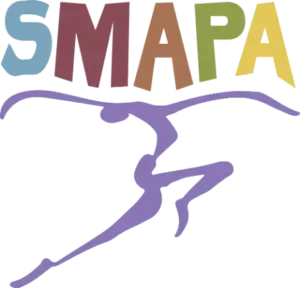Class Descriptions
Ages 2–5
Preschool Division
The preschool division focuses on age-appropriate skills such as jumping, skipping, leaping and galloping. The use of various teaching tools such as scarves, mats, hoops and rhythm instruments enhance the learning/teaching process.
As children progress from one level to the next, they are introduced to concepts such as body placement, coordination and the concept that their body is an instrument of self expression.
Dance with Me
A program for children 2-3 years old (with their caregiver) designed to reinforce cognitive skills, develop an understanding of concepts such as over, under, around and through, help in the recognition of shapes and colors all while enjoying music and movement in a 45-minute class. Comfortable clothing and bare feet are required.
Creative Movement
A 45-minute class for students ages 3-4 years old. It is required that all students are potty trained and able to separate from caregivers. Children explore movement through a loosely structured class with floor-work, center-work, and across the floor movement. Children wear leotards, footless tights, and no shoes.
Pre-Dance
A one-hour class for students ages 4-5 years old. Pre-Dance is more formal and structured as students are more coordinated and capable of skill-based learning. Although creative expression continues to be emphasized at this stage, dance vocabulary and movements begin to be taught. Children wear leotards, footless tights, and no shoes.
Pre-Modern
Pre-Ballet

Ages 6–11
Junior Division
At the Junior Division level, opportunities begin for developmental training in Ballet, Modern, Traditional Modern Jazz, Tap, Hip Hop and Musical Theater. Placement in classes is geared to a student’s chronological age, but consideration is also given to their skill level. Most students will remain in the same level for an entire academic year. A student however, is never held back if advancement is warranted mid-year.
Hip Hop
Classical Ballet
Modern
Jazz
Tap

Ages 12–18
Prep Division
The Prep Division provides the serious student, as well as the student who simply enjoys dance, the opportunity to develop and refine their skills. Students under 12 are permitted to enroll in classes within this division with instructor approval. Prep Division students may also take certain Adult Division classes with instructor approval.
At this level, students are encouraged to take multiple classes in order to maximize their training regimen. The more serious student is also encouraged to study multiple dance forms in order to expand their versatility and build a broader base of skills.
Modern
Ballet
Pointe
Tap
Jazz
Contemporary Modern
Hip Hop
Choreography
A composition class where students learn the fundamentals of creating dances. Most often taught on the college level, the more advanced student will benefit from an early start in understanding the basics of developing movement for the stage.
18+
Adult Division
The Adult Division was designed to provide adult dancers (both trained and non-trained) a non-competitive forum in which to simply enjoy dance. Adults who require a higher level class may also participate in Prep Division classes. All other standard class offerings – Ballet, Modern, Jazz, Afro-Haitian, Flamenco, and Tap – are open level. Adults of all ages and experience levels are welcome.
Floor Barre
Iyengar Yoga
Senior Dance Fitness
A low-impact exercise class open to seniors 65 and older.

